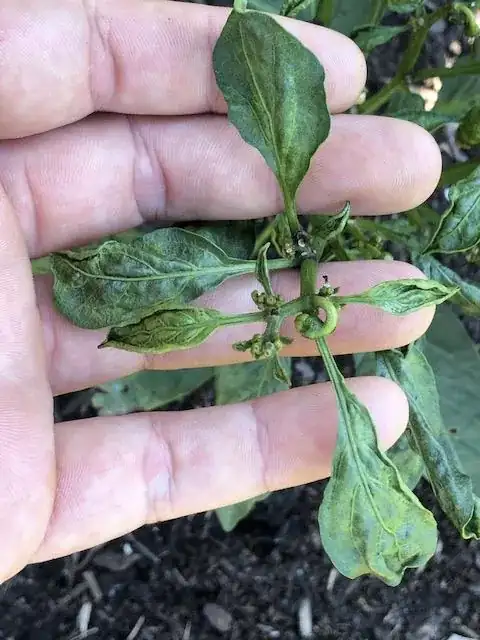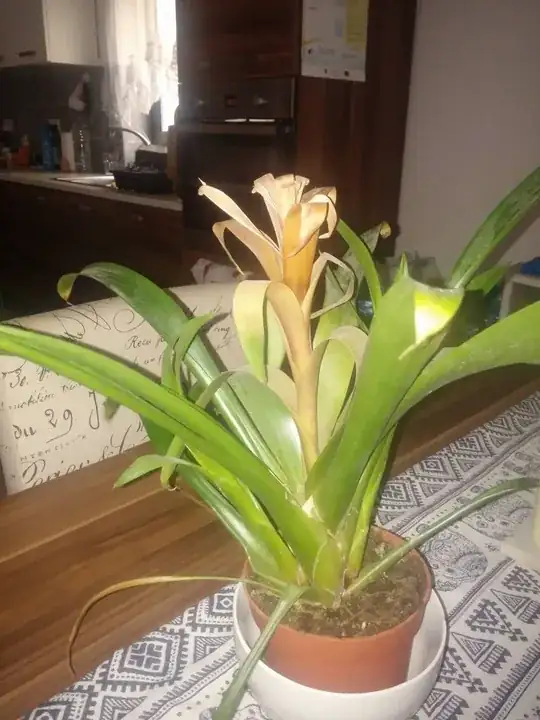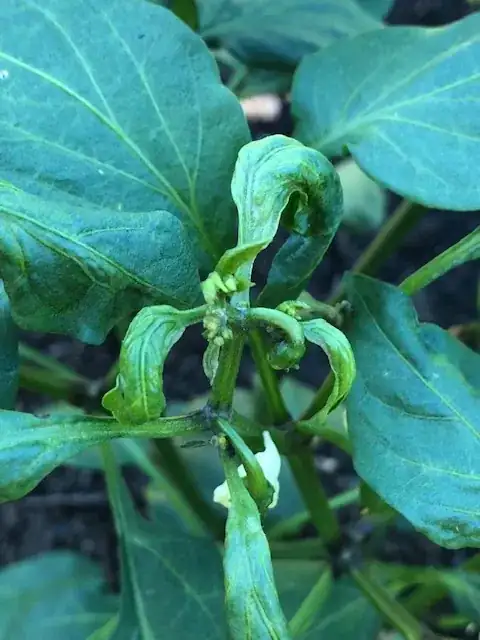A New-ish gardener here! This year I have planted 5 varieties of peppers in a brand-new raised bed in central Arkansas (zone 7b). The fill for the raised bed is 100% compost purchased from a local plant store, with no amendments or additions.
Initially, all of the peppers saw slow growth through the cooler, wetter weeks after transplanting, but as it has warmed up most of them have grown quickly. At first 2 of the plants showed signs of strange growth, including new leaves curling, thickening, becoming harder, darkening, and areas of new growth looking strange and stunted. Because of the presence of these symptoms only on new growth, I assumed a calcium deficiency. (google image results for "pepper plant calcium deficiency" show at least one result that looks like my plants, but the comments were inconclusive). Several posts here have suggested that ongoing pest damage could cause this, but I have seen very few pests and have preemptively applied neem oil on a couple of occasions.
In the last few weeks, new growth on some of the surrounding plants has started to show some of the same symptoms and now I am not so sure what could be going wrong here. I'm starting to think that it could be one of the following:
- Disease (virus, maybe? transmitted between plants via pest)
- Deficiency of some nutrients (peppers are growing in compost with no soil mixed in)
- Toxicity of some nutrients (I have no idea what the nutrient balance of the compost is)
- Presence of herbicide in compost (I don't know the source of the compost)
- Environmental factors (Maybe overwatering. Compost retains significant moisture)
I'm trying to determine if any of the above causes are obvious causes of these symptoms.
In addition, These plants are planted within 5-10 feet of a bed of tomatoes in similar planting conditions, some of which are showing leaf curl which does not resemble this, and a potted ground cherry plant in store-bought potting soil does have similar symptoms.
I've attached some images that should show the affected area of a couple of the plants, as well as a previously healthy plant that is now affected. I can provide any additional photos, including ones of surrounding plants, to help diagnose this.


